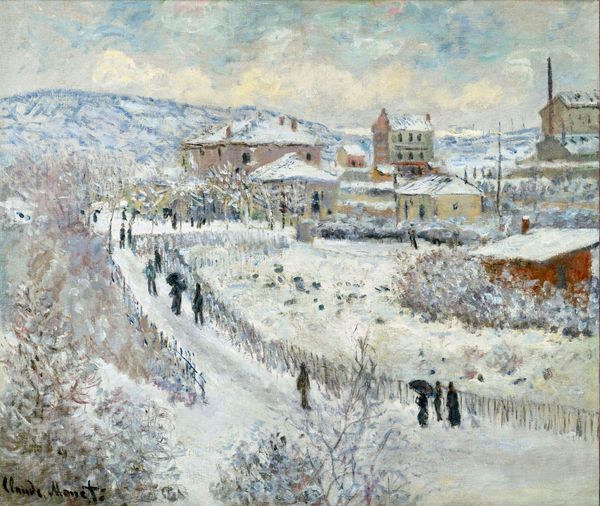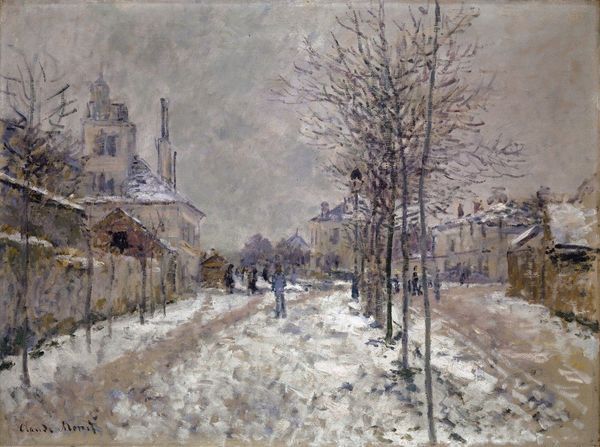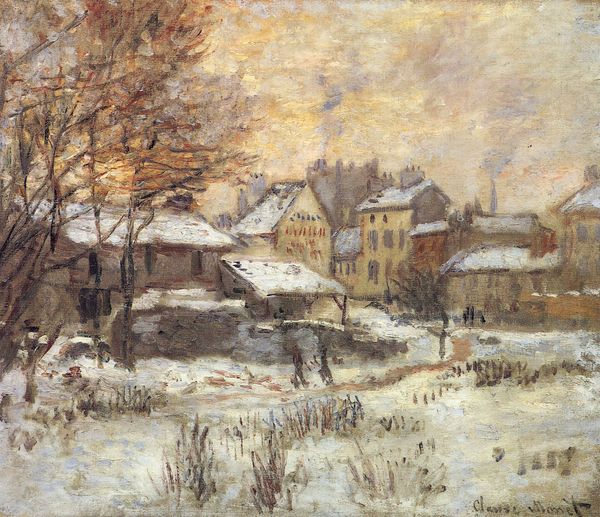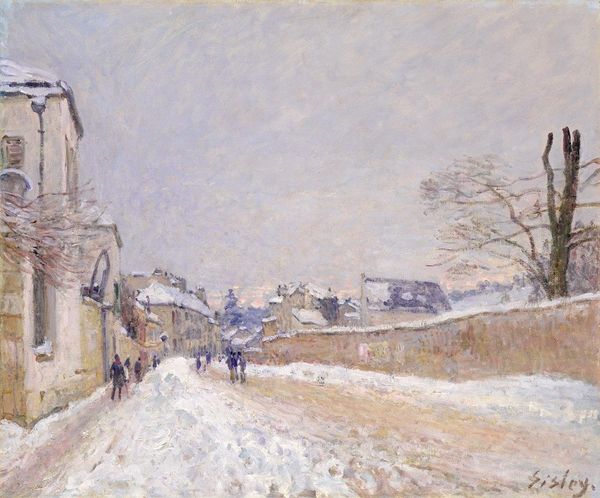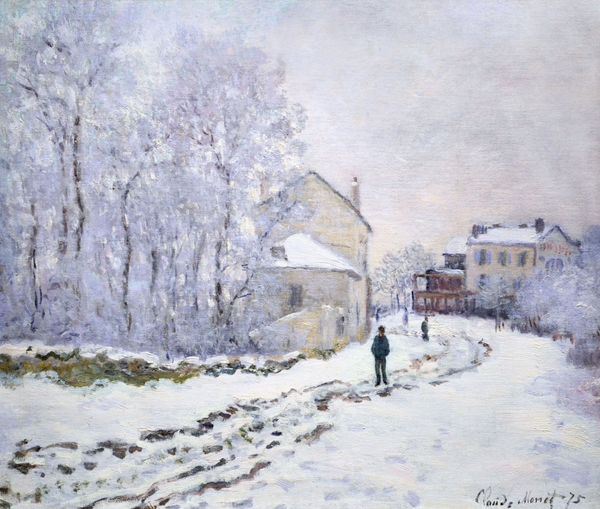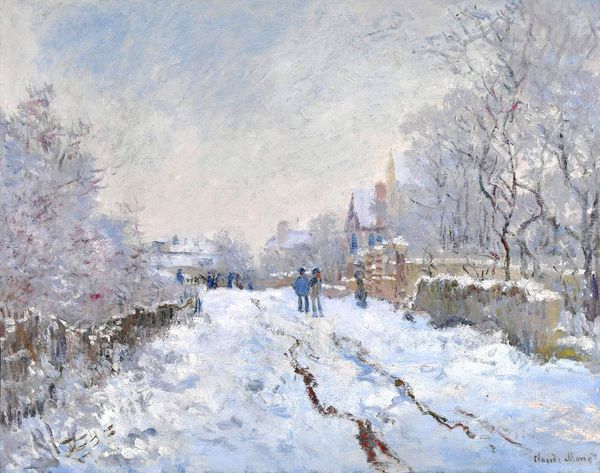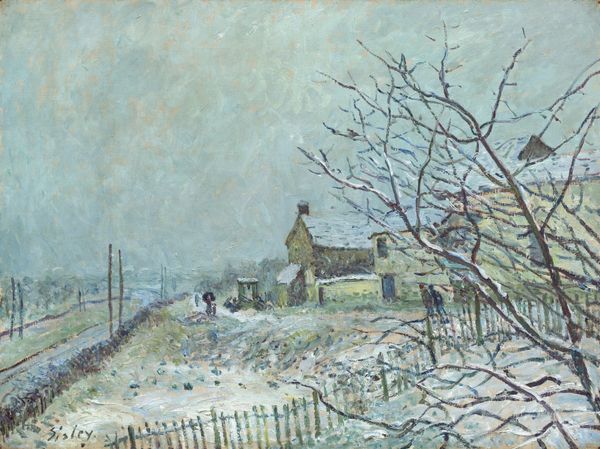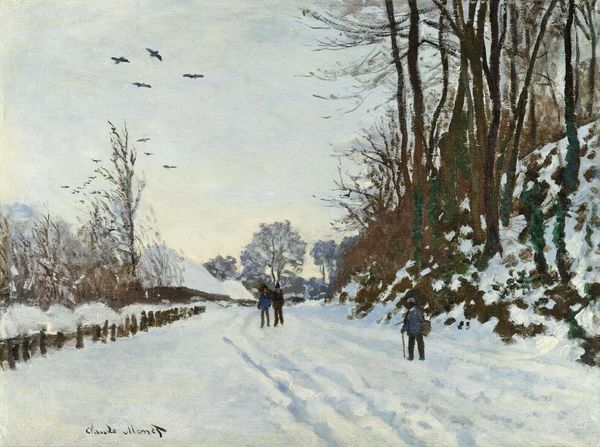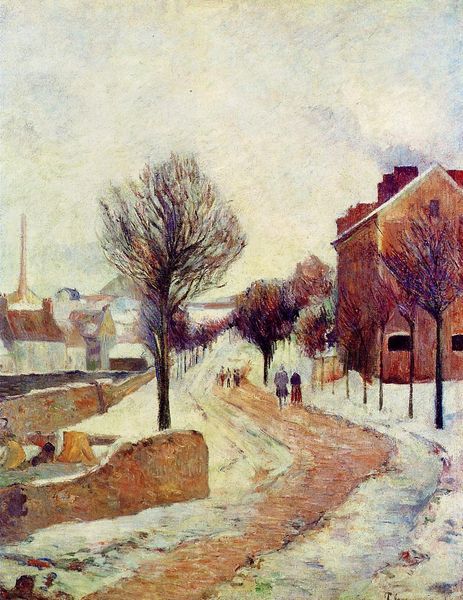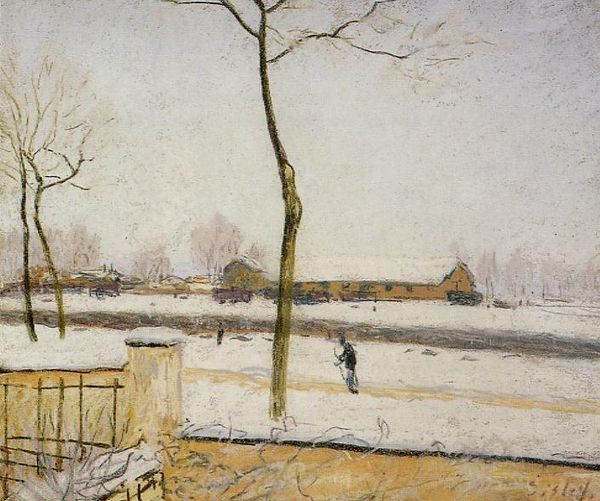
Boulevard Saint-Denis, Argenteuil, in Winter 1875
0:00
0:00
claudemonet
Museum of Fine Arts (MFA), Boston, MA, US
painting, plein-air, oil-paint
#
painting
#
impressionism
#
impressionist painting style
#
plein-air
#
oil-paint
#
landscape
#
winter
#
impressionist landscape
#
oil painting
#
cityscape
#
realism
Dimensions: 81.6 x 60.9 cm
Copyright: Public domain
Editor: Here we have Claude Monet's "Boulevard Saint-Denis, Argenteuil, in Winter," painted in 1875 using oil. The thick snow gives a certain stillness to the bustling boulevard. How do you interpret this work? Curator: Beyond its aesthetic appeal, consider the sociopolitical context. Monet painted this shortly after the Franco-Prussian War and the Paris Commune. This scene, seemingly tranquil, actually reflects the resilience of the French populace during a time of significant national trauma. The snow, perhaps, veils deeper societal wounds. Does this reframing alter your understanding of the stillness you initially perceived? Editor: It does. The war and the Commune aren't things I immediately think about when I look at an impressionist painting, especially a winter landscape. It feels… discordant. Curator: Precisely. The choice to depict everyday life amid reconstruction becomes a powerful statement. Think about who is present and who is missing. The figures are blurred, perhaps signifying a collective experience, a nation rebuilding. How might gender and class factor into this scene of reconstruction? Editor: That's a great point. It makes me think about who was doing the physical labor and what their place was in French society. There’s a whole untold narrative of hardship, right beneath the pretty snow. Curator: Exactly! Considering these contexts allows us to view the work not just as a representation of a place, but also of a pivotal historical moment, full of complicated social and political meaning. Editor: I'll never see an Impressionist winter scene the same way again. Thanks for making me think beyond the surface. Curator: Likewise, your initial observation on the stillness helped uncover these layered meanings, so thank you.
Comments
No comments
Be the first to comment and join the conversation on the ultimate creative platform.
